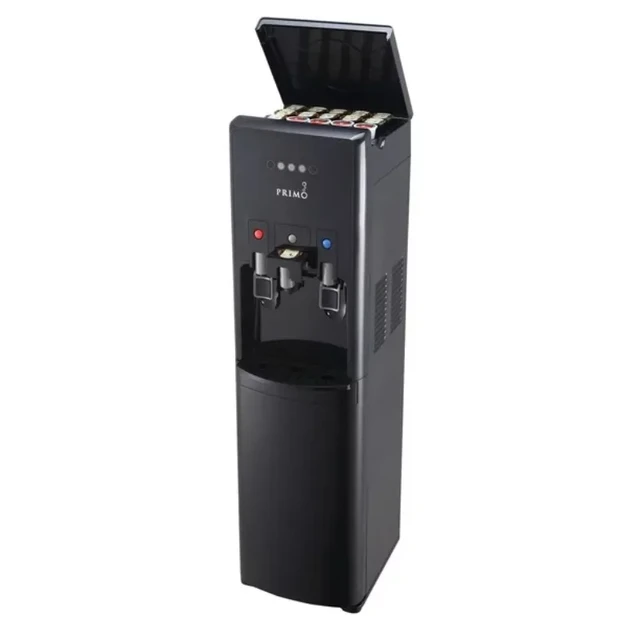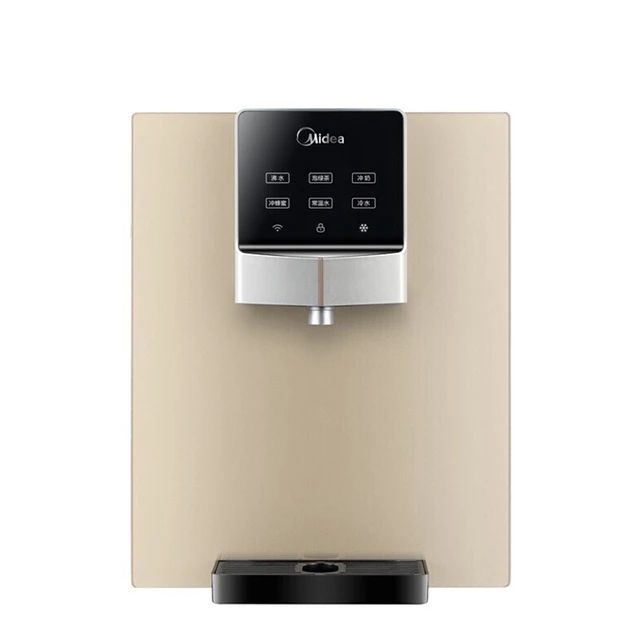Introduction
Drinking water from a refrigerator dispenser can be a convenient and refreshing way to stay hydrated. However, concerns about the safety of this water source may arise due to potential contaminants or improper maintenance. In this guide, we will explore wether is it safe to drink water from the fridge and the factors that contribute to the safety of drinking water from a refrigerator dispenser, including filtration systems, maintenance practices, and potential risks. By understanding these factors, you can make an informed decision about the safety of consuming water from your refrigerator dispenser.

Is it safe to drink water from refrigerator dispenser?
Filtration Systems in Refrigerators
1.1. Water Filtration Mechanisms
Many modern refrigerators are equipped with water filtration systems to enhance the quality and safety of the dispensed water. These systems typically use activated carbon filters or other materials to remove impurities, such as chlorine, sediment, and some contaminants, ensuring cleaner and better-tasting water.
1.2. Filter Lifespan and Replacement
The effectiveness of the filtration system depends on regular filter replacement. It is crucial to follow the manufacturer’s guidelines on filter replacement intervals to maintain the filtration system’s efficiency and ensure the water remains clean and safe to drink. Neglecting to replace the filter as recommended can compromise the quality and safety of the water.
Regular Maintenance and Cleaning
2.1. Bacteria and Mold Growth
The warm and moist environment inside a refrigerator dispenser can promote the growth of bacteria and mold if not properly maintained. These contaminants can compromise the safety of the water and pose health risks. Regular cleaning and maintenance are vital to preventing the development of harmful microorganisms.
2.2. Cleaning the Dispenser Components
Cleaning the dispenser components, such as the spout, nozzle, Water dispenser buttons and drip trays, is crucial to remove any residue or mold that may have accumulated. Regularly wipe down these surfaces with a mild cleaning solution or as recommended by the manufacturer. Follow the guidelines provided in your refrigerator’s manual for detailed instructions on cleaning and disinfecting the dispenser.
Water Source and Plumbing
3.1. Water Source Quality
The quality and safety of the water dispensed from a refrigerator depend on the source water. If your home has a reliable and safe public water supply, the water entering the refrigerator dispenser is likely to be safe for consumption. However, if you have concerns about your tap water quality, using additional filtration methods or a refrigerator filter can provide an extra layer of protection.
3.2. Plumbing System Condition
The condition of your home’s plumbing system can affect the safety of the water dispensed through your refrigerator. Older or deteriorating plumbing systems may introduce contaminants into the water supply. Regular inspections, maintenance, and addressing any plumbing issues promptly can help ensure the water quality remains safe and clean.
Potential Risks and Precautions
4.1. Bacterial Contamination
Improper maintenance and infrequent cleaning can lead to bacterial contamination in the refrigerator dispenser. Bacteria such as E. coli or coliform may contaminate the water supply and pose health risks. To minimize the risk of bacterial contamination, follow proper cleaning and maintenance practices as recommended by the manufacturer.
4.2. Lead Contamination
Lead can be a concern if your home or plumbing system has lead pipes or fittings. While refrigerator filters can remove some impurities, including lead, it is essential to ensure that your refrigerator is equipped with a certified filter that meets the appropriate standards for lead removal. Regularly test your water for lead, especially if you live in an older home or suspect the presence of lead pipes.
4.3. Stagnant Water
Water that sits stagnant in the dispenser for extended periods can become a breeding ground for bacteria. If you are away from home for an extended period or do not use the dispenser frequently, consider flushing out the system by dispensing a sufficient amount of water to remove any stagnant water before consuming it.
Additional Precautionary Measures
5.1. Use Cold Water for Consumption
When using the refrigerator dispenser for drinking water, select the cold water option. Cold water tends to flow directly from the water source and is less likely to have been sitting stagnant in the dispenser. This can reduce the risk of bacterial growth and ensure a fresh supply of water.
5.2. Regularly Inspect and Replace Seals
Check the seals and gaskets around your refrigerator dispenser regularly. Damaged or degraded seals can allow air and contaminants to enter the dispenser, potentially affecting the quality and safety of the water. Replace these seals as needed to maintain a tight seal and prevent contamination.
5.3. Regularly Test the Water Quality
If you have concerns about the safety of the water from your refrigerator dispenser, consider periodically testing the water quality. Home water testing kits or professional testing services can provide detailed information about the presence of contaminants. This can help identify any potential issues and inform your decision on whether to consume water from the dispenser.
Benefits of Drinking Refrigerator Water
Convenience and Accessibility
One of the most significant advantages of refrigerator dispensers is convenience. Having easy access to chilled water encourages more frequent hydration. Staying hydrated is essential for overall health and can improve focus and energy levels. The simple act of pressing a button to access fresh water makes it more likely that individuals will drink enough throughout the day.
Additionally, refrigerator water dispensers can eliminate the need for bottled water. This not only saves money but also reduces plastic waste. By opting for tap water through a dispenser, households contribute positively to the environment. The convenience and sustainability make refrigerator water dispensers an appealing choice.
Flavor and Temperature Control
Another benefit is the taste and temperature control. Many refrigerator water dispensers provide chilled water, making it more refreshing to drink. The improved taste can encourage individuals to consume more water. This is especially useful during hot weather.
Additionally, some modern dispensers even offer options for sparkling water. This variety can make hydration more enjoyable. Consequently, individuals may find themselves drinking more water. The overall experience is often more pleasant compared to drinking water directly from the tap.
Addressing Concerns with Refrigerator Water
Understanding the Myths
Despite the many benefits, myths about refrigerator water safety persist. One common misconception is that all refrigerator water is contaminated. While it is essential to remain vigilant, this is not universally true. Many households maintain their dispensers adequately. Regular cleaning and filter replacements can greatly reduce risks.
Another myth is that bottled water is always safer than dispensed water. In reality, bottled water can also contain contaminants. Additionally, the quality can vary significantly between brands. Consequently, discerning consumers should research and consider their water sources carefully.
Implementing Safety Measures
To address concerns, implementing practical safety measures is prudent. For instance, regularly test your water and inspect the filtration systems. Furthermore, establish a cleaning schedule for the dispenser. By practicing these habits, you can assure yourself of safe drinking water.
It’s also beneficial to educate family members about the best practices for maintaining the dispenser. Creating a culture of safety within the household encourages everyone to participate. This collective effort can lead to consistently safer drinking water for everyone.
Signs That Your Water May Not Be Safe
Changes in Taste and Odor
One of the first signs that your refrigerator water may not be safe involves changes in taste or odor. If you suddenly notice a metallic or chlorine-like flavor, it could signal contamination. Additionally, a musty smell might indicate microbial growth in the water system.
Trust your instincts; your senses can be an excellent first line of defense. If you consistently notice these changes, you should investigate further.
Cloudiness and Particulates
Another warning sign is cloudiness or the presence of particulates in your water. Clean water should appear clear and free from visible impurities. If your water looks milky or contains small particles, it may be unsafe.
In such cases, consider testing your water for contaminants. Many professionals can conduct thorough assessments, providing you with comprehensive results. Taking action in a timely manner can prevent potential health risks.
Conclusion
Is it safe to drink fridge water?
Is it safe to drink water from fridge depends on several factors, including the filtration system, regular maintenance and cleaning, the quality of the water source, and plumbing conditions. By following proper maintenance practices, regularly replacing filters, and being aware of potential risks, you can ensure safer drinking water from your refrigerator dispenser. Consider additional precautionary measures such as using cold water, testing water quality periodically, and inspecting seals. Taking these steps will help you make an informed decision about are fridge water dispensers safe, and enjoy refreshing and safe water from your refrigerator dispenser.



